Evil Genius 2 is a diabolical, terrible, no-good Doomsday Device capable of annihilating your sense of time completely. I say that as a compliment: it’s been ages since I’ve played a game that left me wondering how many hours have elapsed since I first sat down. Suffice to say, it’s never felt so good to be so bad.
Evil Genius 2: Maniacal Management
In Evil Genius 2 your ultimate goal is to build a Doomsday Device that will bring the world to heel, and to do so you need to establish an impenetrable, sprawling lair. Anyone who’s played the original or even the old Dungeon Keeper titles will know what to expect here: you’ll gradually carve out, literally, your base of operations, filling it with minions and specialized rooms that will provide you the means of taking over the entire planet.
There are vaults for your gold, facilities for your power generators, and various traps to lace your corridors with to thwart the Forces of Justice in their attempts to foil your insidious plot. Lair builders require a healthy amount of task management, and Evil Genius 2 is no different.
The quickplay option in the main menu gets you started with a lengthy tutorial that breaks down all of the basics, from recruiting additional minions, to researching additional technology, and running schemes on the Global Operations world map. There’s plenty to juggle all at once in Evil Genius 2, but Rebellion has done a commendable job of easing new and returning players into the game’s strict core loop.
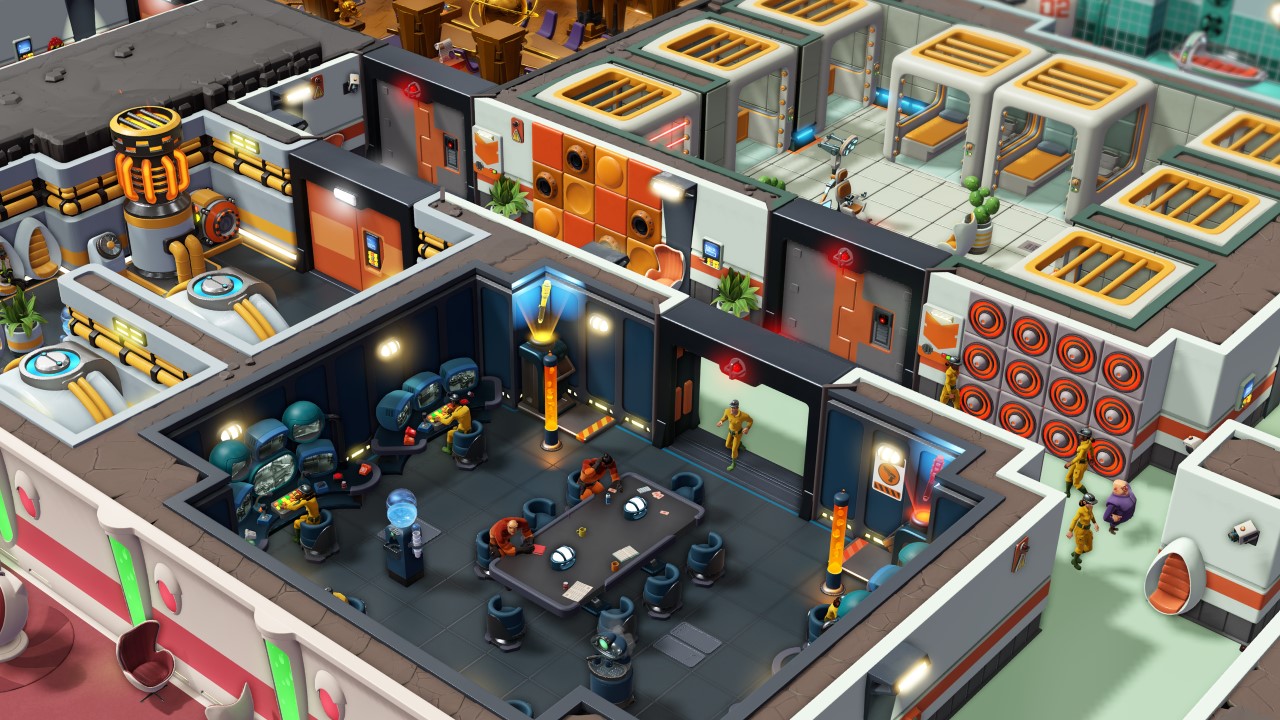
A genius never sleeps, at least not one hellbent of total world domination, and there are plenty of spinning plates to balance at any one time. None are more important than your Schemes in the Global Operations segment of the game. Returning players will already understand the importance of keeping an ever attentive eye on this tactical map, since it can be the difference between a decisive victory and a long, painful grind to see your diabolical plans to fruition.
It’s to Evil Genius 2’s credit that managing all these tasks is an absolute time-evaporating joy. Once you move out of the tutorial you’ll have a series of Campaign objectives to complete, ensuring you’ll always have some sort of goal to push towards. The majority of these incentivize expanding your base, researching specific upgrades, recruiting more specialized minions, and running the aforementioned Schemes in your Global Operations, meaning you’ll rarely lose track of what you need to push towards at any given moment.
It’s to Evil Genius 2’s credit that managing all these tasks is an absolute time-evaporating joy.
The whole operation would come crashing down if each bit and bob didn’t interlock as well as they do in Evil Genius 2. To run more Schemes you’ll need more minions, so you’ll take some time to expand your Barracks. While doing so you’ll notice patches of denser rock blocking your expansion, so you’ll open your Research panel to set your Scientists to studying the node required to dig into that earth.
Oh, but if you expand your Laboratory you can fit in a few extra Whiteboards that will speed up the research, but you’ll need to both train more Scientists and build more generators in your Power Facility to cover for the additional Whiteboards. But, you remember to take a quick look at your Global Operations and realize you need to reduce your Heat in a few regions. Do you send minions, which you clearly need on-hand to complete your current slate of tasks, or do you spend some Gold to rapidly reduce the Heat despite knowing you’ll have to scale back your plans?
Evil Genius 2 is centered around this constant push-pull of conflicting objectives that you need to manage, and thanks to the informative UI it was easy enough to regain my bearings. It’s not easy to be evil, but damn is it addicting.
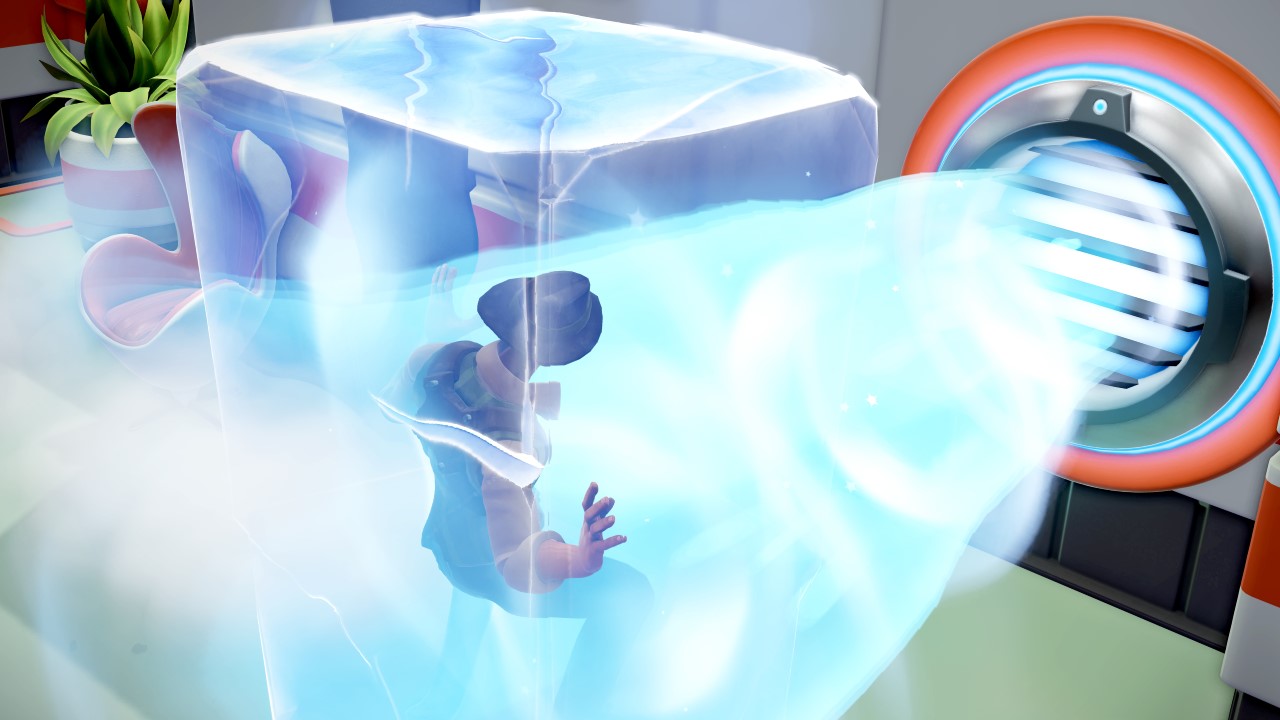
No, Mr. Steele, I expect you to die.
There’s plenty to juggle in Evil Genius 2, to include harmful incursions from the Forces of Justice. See, Evil Genius 2 is a parody of the spy genre that rose to prominence in the 1960s – more Austin Powers than James Bond. Just because the game isn’t all that serious tonally that doesn’t mean the world will simply go along with your plans to dominate it.
The traps you use to counter the Forces of Justice bold enough to infiltrate your lair alone are pure cartoon wonders. Have you ever wanted to use a punching glove to launch an investigator into pinball bumpers that’ll ricochet them into a shark tank? You can do that! Part of Evil Genius 2’s task management charm is figuring out how to overcome these inevitable intrusions, and while the Cover Operation is great for a more subtle approach, I spent more time building devious Rube Goldberg death traps than roulette tables.
How I built and ran my lair felt unique to my preferred playstyle.
That’s part of the fun and strategy of Evil Genius 2. The game has a strict core loop, sure, and you definitely don’t want to ignore your Global Operations, but how I built and ran my lair felt unique to my preferred playstyle. Well, at least the first time I completed a campaign.
I felt this way during my first playthrough of the game, where every item, Side Quest, and objective provided a fresh new challenge to overcome. As your Global Operations and lair expand you’ll find yourself swatting away more and more pesky Forces of Justice agents, balancing multiple lair renovations, and juggling a nearly overwhelming number of Schemes. This all led to me losing multiple afternoons and evenings to Evil Genius 2, because I always had “just one more task.”
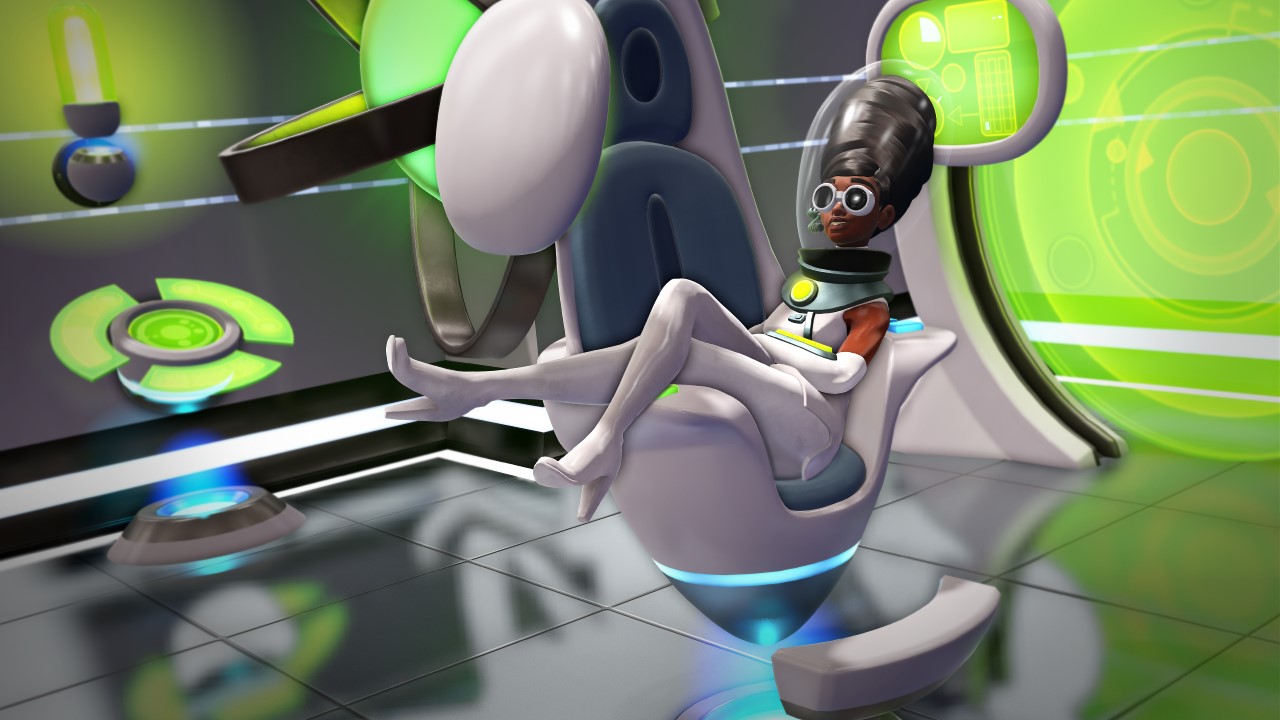
Evil Genius 2 – Emphasis on Genius
Once I started up my second campaign with one of the three other Geniuses available in Evil Genius 2 the repetition started to show. Visually, each of the four Geniuses have a unique look and flavor that’s easy to identify. Kalika is the obvious mega-mind villain, as compared to Red Ivan who firmly believes “might makes right.” They each have two abilities and a passive affect that can alter gameplay, at least on paper.
The first skill among every Genius is essentially a copy-paste of Max’s, but with a personalized touch thrown in. Each Genius will yell at their minions within range to work faster when the skill is activated, and the secondary bonus for each Genius felt pretty niche. Different enough to add some minor gameplay wrinkles, but nothing that made that Genius truly stand out after a few hours of play.
That’s largely the issue with the four Geniuses in general – the most personality they ever display is in the Genius select screen. Even dialogue during the Campaign is largely the same between Geniuses, which made subsequent playthroughs feel samey. Their passive effect has a more noticeable impact on the game, but not enough to make each Genius feel distinct.
The most personality Geniuses ever display is in the Genius select screen.
This problem is further exacerbated by the lack of any real visual difference between the Geniuses when it comes to your lair. Aside from their Inner Sanctum, your Genius has zero influence on the look and feel of your lair. Emma’s lair will look like Kalika’s lair, which will look like Max’s and Red Ivan’s. I wasn’t expecting anything dramatic, but considering how wonderfully detailed each buildable room is, it was disappointing to see my choice of Genius didn’t really amount to much aesthetically.
The lack of personality between Geniuses is further harmed by the presence of Henchmen. Henchmen on their own are fantastic additions to your lair, and are well worth the challenge to acquire. Thing is, since the Geniuses lack any real visual personalization, they just blend in with your Henchmen who are controlled and used in the same exact manner.
I’m not saying your choice of Genius in Evil Genius 2 doesn’t matter. It does slightly alter your gameplay and how you approach world domination, and the campaigns do begin to branch out a bit towards the end. There are even different endings, and each Genius has their own Doomsday Device to build.
There is some variety here, it just doesn’t feel as impactful as it should. The three islands you can choose from fair better in this regard: the layout of your island lair has a far more noticeable influence on your playthrough than your choice of Genius. That said, I do wish we had something else on offer other than “secret island base that doubles as a casino.” Hopefully later DLCs addresses this – I would love to see a volcano lair with lava you have to work around, or a ski resort Cover Operation that necessitates more vertical layouts.

Spy-Fi Charm
My disappointment with the Geniuses and their lack of personality certainly doesn’t apply to the overall presentation of Evil Genius 2. Every element drips with a delightful, hyper-stylized, retro aesthetic – from the cartoonish character and environment designs that draw from 1960s fever dreams of the future, to the little details such as the “Speed Up Time” toggle sounding like a tape deck whirling forward – the team at Rebellion have put together an audio-visual treat.
Zooming into a room will reveal a lively soundscape befitting that room. Clicking elements of the UI plays a nice chunky sound reminiscent of the keys on an old tape deck. Returning composer James Hannigan’s score can get a little long in the tooth for how often certain tracks play on repeat, but it’s an otherwise solid collection of music that properly embodies the Spy-Fi tone Evil Genius 2 is drenched in.
If I have to level one complaint at the art and design it’s the lack of variety between the various investigators for the Forces of Justice. There are various super-powers across the globe, yet their investigators are all the exact same, the color of their outfit aside. Agents and Super Agent each have a unique look though, so it’s really a minor nitpick.
That Evil Genius 2 runs as well as it does is a real wonder. I reviewed the game on an MSI GP66 Leopard laptop, since I’m currently out-of-town for a thing or two, and the game ran nearly flawless on my mobile hardware. Granted, the busier my base became the lower the maximum framerate dropped, given that my CPU was getting hammered harder.
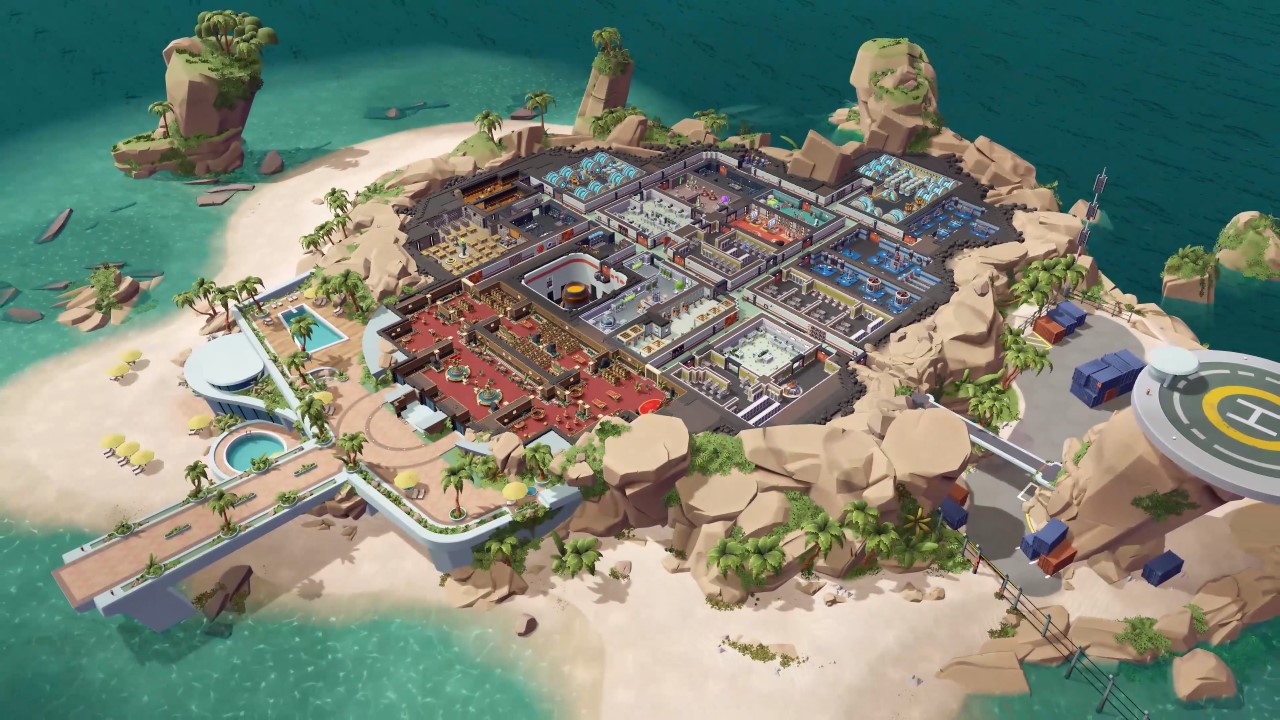
That said, I’m talking the difference between 144 frames-per-second and 130; not that substantial in the face of things. The DX12 client ran a touch smoother with a lower overall framerate than Vulkan on my system, but both were solid all-around. One will perform better than the other depending on your hardware, but both felt close enough to be comparable.
The UI is a solid mix of form and function, capable of conveying important information at a glance without sacrificing the Spy-Fi look. It’s coated in a thick layer of 1960s paint, but it never lost track of what a proper UI should be: easy to read, simply to navigate, and unobtrusive. That said, it wasn’t flawless.
There are a set of notification icons in the bottom-right of the UI that were largely useless. The first one cycles through every single alert you’ve been given, even older ones you’ve already handled. The other four are no better, and the combat one loves to linger well after the threat has been dealt with.
Typically this would be a minor quibble, but you can’t remove these notifications. Not being able to trust my notifications in a game where information is key to success is an issue. Being unable to manually clear those notifications to at least mitigate this quirk is a problem. Thankfully, all the other areas in which information is conveyed are concise and accurate, but it was weird to see such a vital portion of the UI so under-baked.
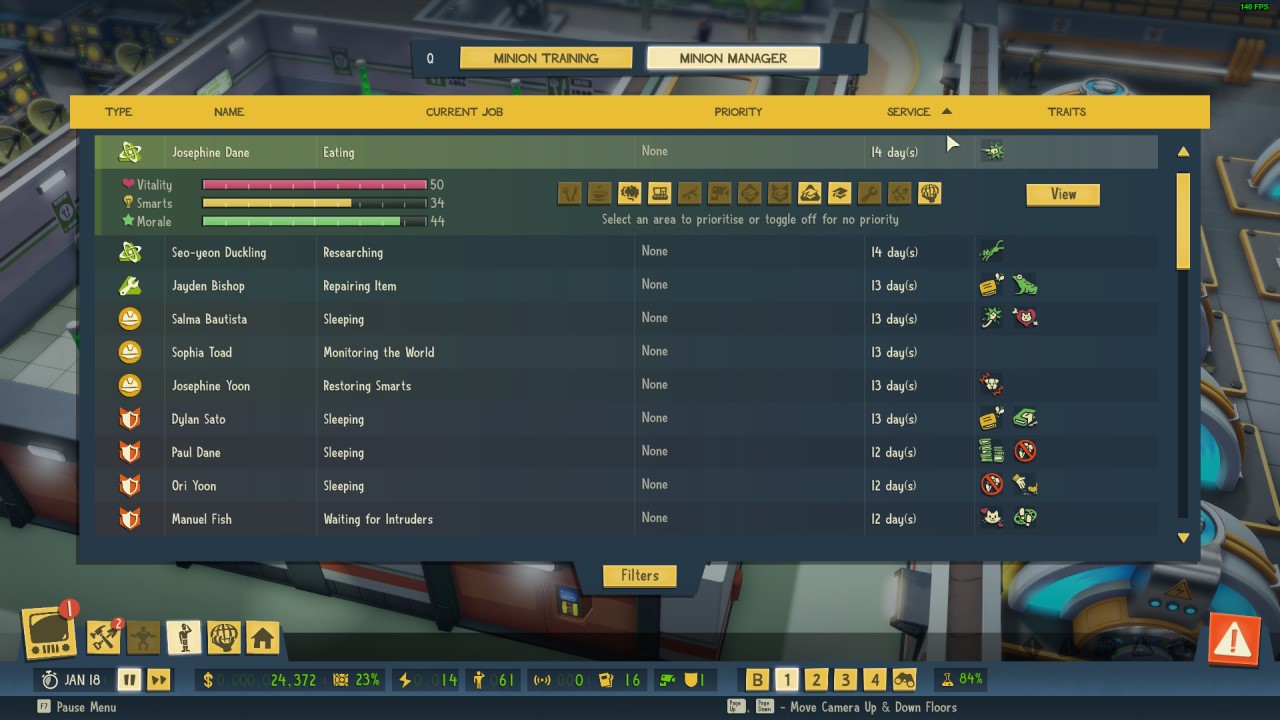
Additionally, I encountered a few UI bugs while playing Evil Genius 2. Sometimes the prompts that would indicate a new building or item was available wouldn’t clear, which isn’t as aggravating as the flimsy notification, but annoying nonetheless when I’d look down thinking I had a new item to build and remember “oh right, it’s just a bug.”
As a final complaint, the tutorial completely glosses over one of the most important panels in the UI – the Minion Manager. This menu allows you to filter Minions by type and, most importantly, priority. You can’t directly give orders to minions in Evil Genius 2 – just to your Genius and Henchmen – so early on it felt like I was herding cats.
Once I discovered the Minion Manager my complaints about the A.I. being dumb largely vanished (they’re still dumb, but clearly in a “villain minions are meant to be dumb in this genre” sort of way). Why the otherwise robust tutorial skipped over this crucial menu is well beyond me, and I can see some people growing frustrated with Evil Genius 2 simply because they had no idea they could better manage their wayward minions.
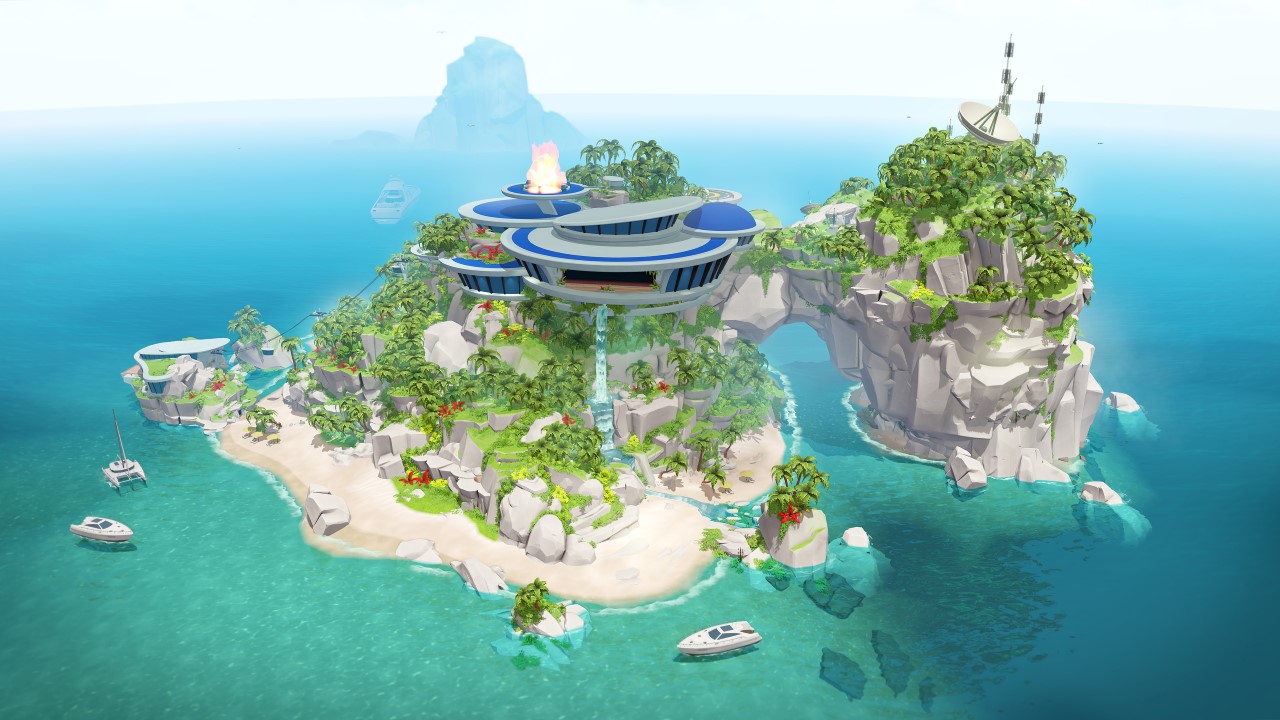
The Verdict
Despite some flaws, Evil Genius 2 is a doomsday device built to dominate your free time. It’s addictive, easy to understand lair building and retro Spy-Fi aesthetic will pull you in and not let go, even after hundreds of hours. It’s a shame the titular Geniuses don’t feel all that distinct, and that the otherwise stellar UI has some annoying issues, but that won’t stop Evil Genius 2 from taking over your world. It feels oh-so-good to be oh-so-bad.


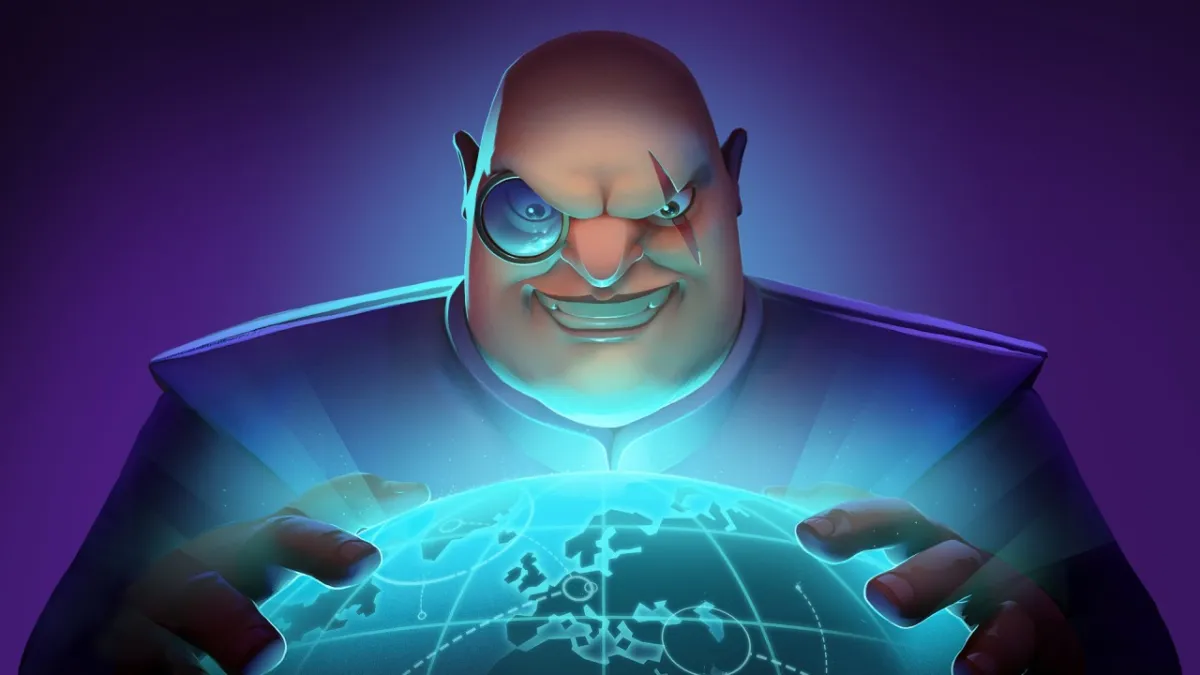








Published: Mar 29, 2021 10:00 am